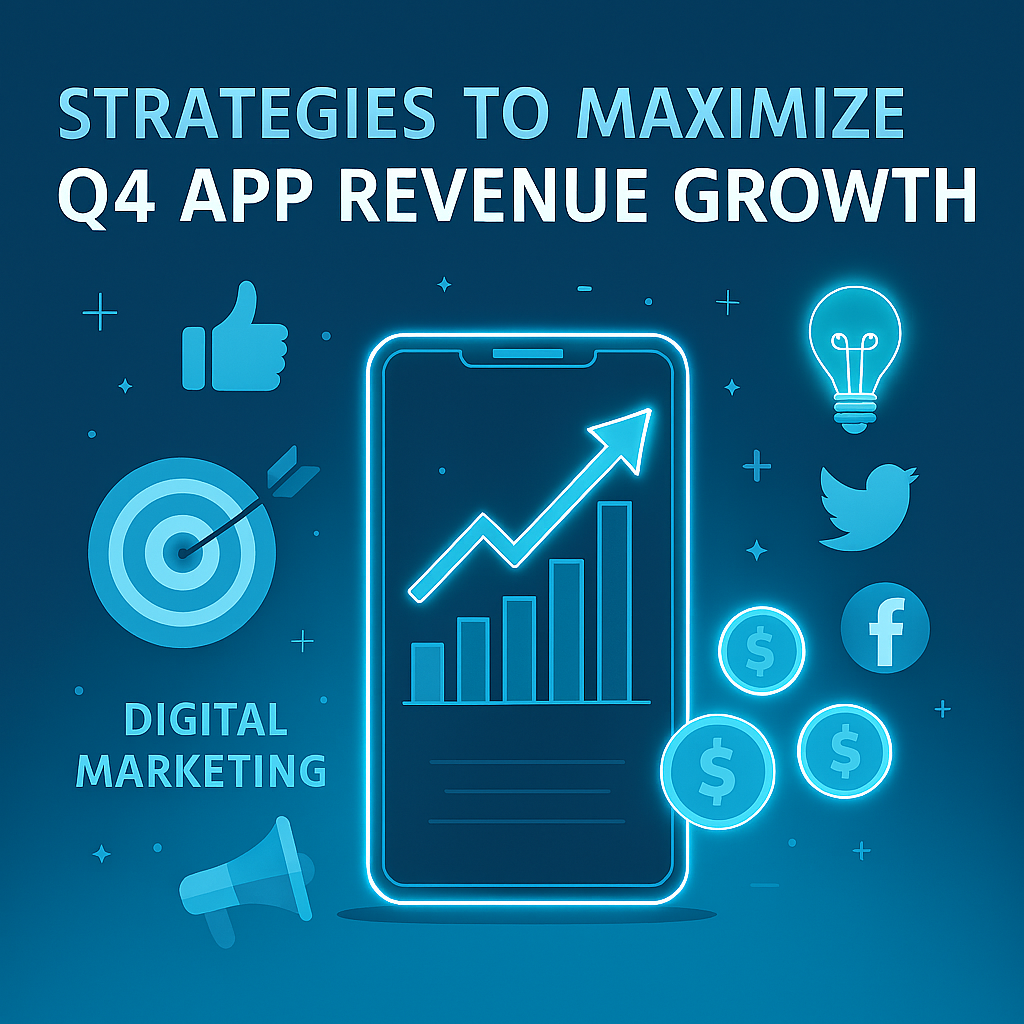Are your user acquisition strategies ready to evolve in 2025?
Learn how today’s top UA teams are reducing Cost Per Install (CPI) without compromising on user quality—and how you can do the same using AI-powered optimization, smarter targeting, and creative innovation. Let’s dive in!
Lowering CPI while maintaining high user quality might seem like walking a tightrope—but in 2025, it’s more achievable than ever. As competition for installs intensifies, marketers must become more strategic, data-savvy, and performance-oriented. The goal isn’t just to bring users in—it’s to bring the right users in, efficiently.
In this article, we’ll break down the strategies leading marketers are using to reduce CPI while continuing to attract high-value, engaged users.
- 2025 CPI Strategy: Efficiency Meets Quality
- Define User Quality Metrics First: Clarity Before Cost-Cutting
- Smarter Targeting: Don’t Pay for the Wrong Users
- Creative Innovation: Boost Engagement, Lower Costs
- Channel Diversification: Reduce Ad Fatigue & Find Hidden Value
- Automated Optimization: Let AI Do the Heavy Lifting
With the rise of privacy regulations, loss of third-party data, and increased media fragmentation, the average Cost Per Install (CPI) in mobile marketing now varies more than ever—depending on platform, region, ad format, and app vertical. But one truth remains: a low CPI is irrelevant if it doesn't result in valuable, engaged users.
In 2025, top-performing user acquisition (UA) teams are using an integrated approach that blends real-time analytics, creative experimentation, automation, and predictive modeling. The goal is not just to acquire users—but to acquire the right users who will retain, engage, and monetize over time.
Let’s explore the key components of this smarter, AI-optimized CPI strategy.
Before you aim to lower your Cost Per Install (CPI), you need to answer a critical question: What does a high-quality user actually look like for your app? Without this clarity, optimizing for lower acquisition costs risks attracting users who never engage, never convert—and never deliver value.
Start by defining the behaviors that indicate real user value. Depending on your app’s monetization model, a quality user might be someone who:
- Makes an in-app purchase within the first 24–48 hours
- Subscribes after their first or second session
- Returns and engages consistently on Day 7, Day 14, and Day 30
- Interacts deeply with high-value features (e.g., shares content, completes levels, invites friends)
- Shows early signs of long-term retention or LTV potential
These are just a few examples — your app’s definition of quality will depend on its category and, as noted above, your specific monetization strategy. The key is to align your CPI goals with deeper performance indicators.
By identifying these patterns, you shift your UA strategy from generic volume to intent-driven acquisition—targeting users who are more likely to generate real revenue over time. To align acquisition goals with business outcomes, map your CPI strategy to key profitability metrics, such as:
- ROAS (Return on Ad Spend) – Are users generating more revenue than it costs to acquire them?
- LTV (Customer Lifetime Value) – What is the long-term revenue potential per user?
- Retention Rate (Day 1, 7, 30) – Are users coming back after install, and when do they drop off?
These metrics ensure you’re measuring the right things, and not just chasing installs that don’t convert.
Pro Tip: Use BI software to closely monitor user activity early in the funnel — this will help you better assess user quality based on real behavioral signals. Moreover, consider sharing relevant data with your UA partners, enabling them to optimize acquisition campaigns toward users who are more likely to deliver long-term value.
In today’s competitive mobile landscape, mass reach is no longer a winning strategy. The focus has shifted from maximizing impressions to minimizing waste and reaching only those users who are statistically likely to convert and deliver long-term value.
Modern UA teams use AI-powered targeting tools that go far beyond basic demographic filters. These systems allow for hyper-precise segmentation based on:
- In-app behavior and session patterns
- Device type and OS version
- Geolocation and regional engagement trends
- Previous ad interactions and conversion behavior
- Purchase intent and historical monetization signals
By leveraging contextual targeting instead of broad audience buckets, marketers can align ads with relevant content environments — reaching users when their intent is highest. Whether it's targeting by app category, keyword themes, or in-content behavior, this approach drives stronger relevance, reduces CPI, and increases the likelihood of meaningful post-install engagement.
This approach enables value-based bidding, where the budget is optimized toward users with the highest predicted LTV—not just the cheapest installs.
Pro Tip: Create lookalike audiences based on your top 10% of users by LTV. Combine this with ongoing A/B testing to continually refine your targeting criteria and eliminate underperforming segments.
In 2025, creative quality is just as important—if not more—as targeting. Even the most precise audience segmentation will fail without compelling, relevant ad experiences that stop the scroll and spark interaction.
Effective creative strategies now revolve around three core pillars:
- Relevance – Is the creative tailored to the user’s intent or interest?
- Interactivity – Does it invite the user to engage, play, or explore?
- Personalization – Does it reflect user behavior, context, or preferences?
Modern ad formats like playable ads let users interact with the app or game before downloading, increasing install intent. Interactive video ads (with tap-to-explore or choice-based navigation) offer richer engagement. Meanwhile, dynamic creatives use user data to adjust messaging, visuals, or CTAs in real time. Discover Mapendo’s latest updates on multi-page ads and dynamic creatives to see how top UA teams are pushing the boundaries of ad personalization.
These formats not only increase CTR and install rates but also help attract users who are more likely to retain, engage, and monetize.
Pro Tip: Implement multivariate creative testing to experiment with different combinations of headlines, visuals, and CTAs. Let AI analyze post-install behaviors—such as session depth and revenue events—to surface the best-performing creatives for real outcomes, not just clicks.

Relying too heavily on major ad channels like Meta and Google may feel safe—but in 2025, it’s also limiting. Over time, this dependence leads to rising CPIs, creative fatigue, and diminishing returns, as competition for the same audiences intensifies.
To unlock growth and improve cost-efficiency, smart UA teams are diversifying their channel mix by incorporating:
- Emerging ad networks (e.g., programmatic exchanges, in-app networks)
- Connected TV (CTV) campaigns for top-of-funnel scale with measurable performance
- Influencer-led acquisition that blends authenticity with targeted reach
- OEM placements (pre-installs or device-level ads) to tap into untapped user bases
These alternative channels offer access to less saturated audiences and open new paths for engagement, often at more favorable cost-per-outcome rates.
However, success doesn’t come from diversification alone—it comes from measurement maturity.
Pro Tip: Don’t evaluate channels by CPI alone. Instead, track each channel’s downstream impact on key metrics like Day 7 retention, ROAS, and LTV. Some channels with higher CPIs may deliver superior long-term value, making them more profitable in the bigger picture.
Campaign management has evolved. AI platforms now automate media buying, budget allocation, bid adjustments, and even creative rotation.
By analyzing real-time signals—like engagement rates, install behavior, and creative fatigue—AI systems continuously refine your campaigns to maximize ROI and minimize manual input.
Pro Tip: Use ML models to predict LTV from early user behavior and reallocate budget in real time. Mapendo’s fully managed UA platform handles everything — from AI-driven targeting to creative optimization — so you can scale efficiently without added complexity.
Avoid These Common CPI Mistakes
- Focusing only on CPI without looking at downstream metrics like ROAS or retention
- Using outdated or overused creatives — ad fatigue reduces performance fast
- Ignoring post-install behavior — always optimize toward business impact, not vanity metrics
Conclusion: Lower CPI, Higher Standards
In 2025, lowering CPI isn't enough—app marketers must also maintain high user quality to drive real growth. That means aligning CPI goals with KPIs like ROAS, retention, and engagement; using AI-driven segmentation to reach high-intent audiences; innovating with creatives that reduce friction and boost installs; diversifying channels to combat fatigue and uncover new value; and automating optimization for continuous performance improvements. At Mapendo, we help marketers strike that balance—delivering scalable, cost-efficient user acquisition without sacrificing long-term value.
Ready to elevate your UA strategy? Let’s talk.




















